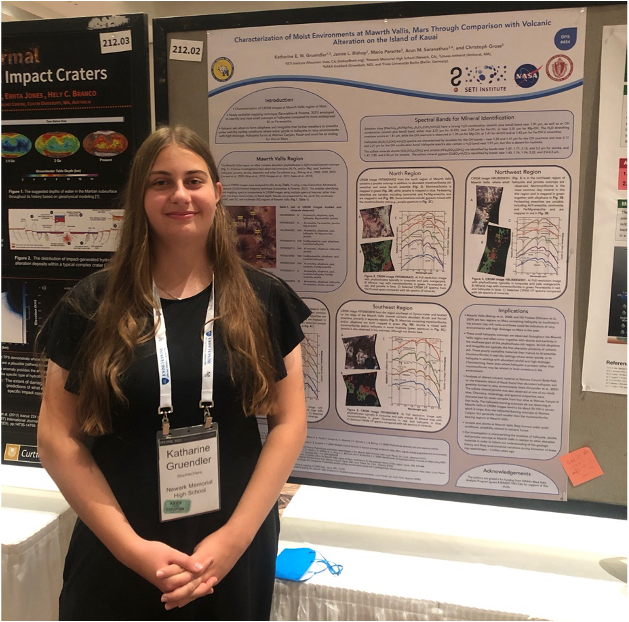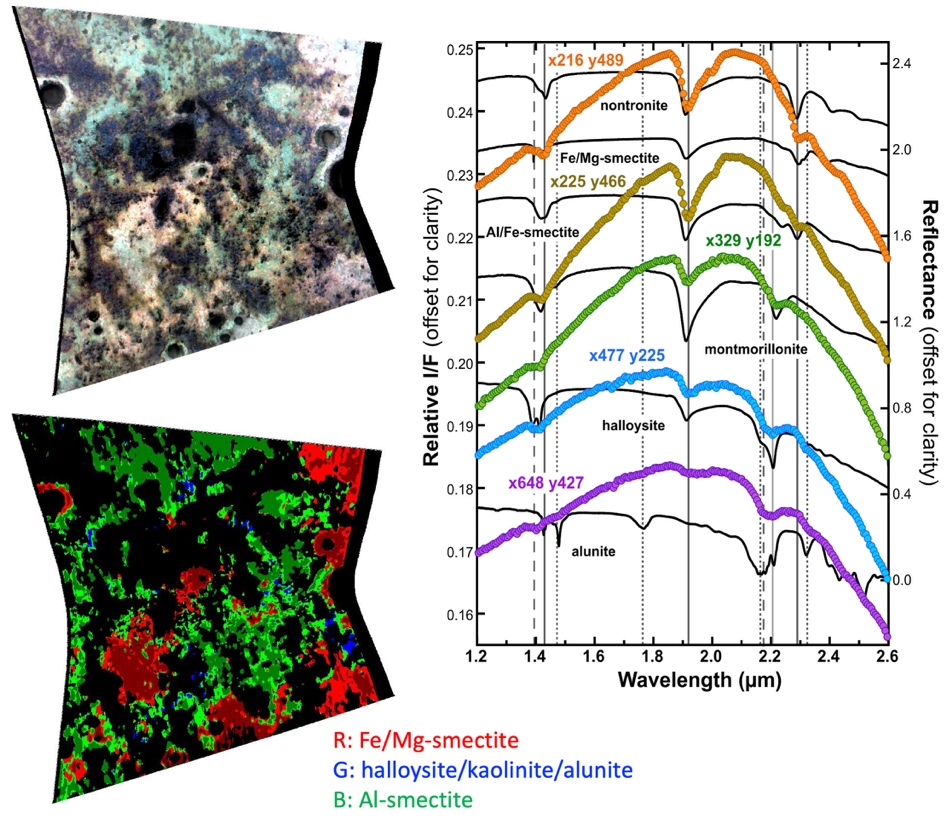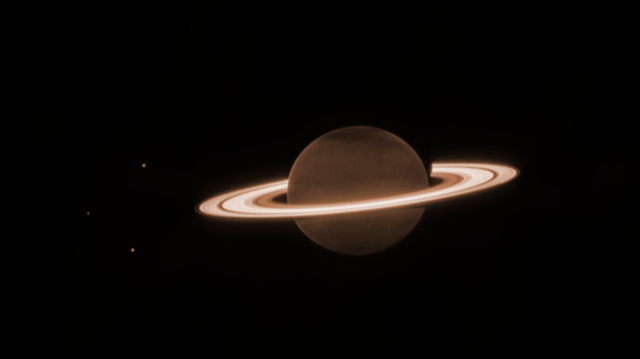Sharing results on Saturn, Rhea, Titan and Mars

Last October, several SETI Institute scientists presented research results at the joint Division for Planetary Sciences (DPS)/Europlanet Science Congress (EPSC) meeting in San Antonio, including Saturn, Rhea, Titan, and Mars results. These included:
- Janice Bishop presented "Investigating the Diversity of Phyllosilicates and Sulfates at Mawrth Vallis, Mars and the Implications for Changing Environmental Conditions." Intern Katharine (Katie) Gruendler presented a poster on her Mars work focused on "Characterization of Moist Environments at Mawrth Vallis, Mars Through Comparison with Volcanic Alteration on the Island of Kauai." Both of these presentations included analyses of CRISM spectral images collected from orbit at Mars to inform our understanding of the mineralogy of the surface and provide clues to the ancient climate on that planet. Current investigations analyze small pockets of clays and associated minerals formed in moist or acidic environments that contrast with the more common neutral and arid environments.

Katie presenting her poster on identifying different environments on Mars using orbital spectra from CRISM. 
View of Mawrth Vallis region of Mars illustrating the channel cutting through the ancient phyllosilicate beds. 
CRISM mineral mapping and spectra of the Mawrth Vallis region of Mars compared to lab spectra of minerals identified there.
- Matija Cuk presented " Solar Semi-Secular Resonances and the Orbital Evolution of Rhea and Titan" in a Planets and Satellites Dynamics session. This project involves computational modeling of the past orbital evolution of Saturn's satellites. In particular, this work explored what the reported fast tidal evolution of Rhea and Titan means for the age of the moons and the rings.
- Joseph Spitale presented "Investigating Irregular Vertical Structures at the Edges of Saturn's A and B Rings" in the Many Planets, More Rings session. In July 2009, near the 11 Aug 2009 Saturn equinox, the Cassini spacecraft imaged irregular-looking vertical structures near the outer edge of the B ring, reaching heights up to 3.5 km, as well as much more subtle structures at the edge of the A ring. We recently began a focused investigation into this phenomenon using Cassini observations, kinematic modeling, and N-body simulations. Here, we report on the early results of the first phase of the investigation to survey the Cassini images for other candidate IVS sightings. We present several examples of structures at both the A- and B-ring edges that exhibit various properties that we expect to be present in the structures.

Irregular vertical structures at the edge of the B ring imaged in 2009 Jul 
Irregular vertical structures at the edge of the A ring imaged in 2009 Aug
- Also, in the Many Planets, More Rings session, Matt Hedman of the University of Idaho presented a talk on behalf of Matt Tiscareno, reporting on JWST observations of Saturn's rings and small moons. We presented spectral observations in the near infrared and far infrared, including a confirmation that isotopes (specifically deuterium) can be detected in Saturn's rings, that Saturn's rings are dominated by crystalline water ice rather than amorphous ice, and that small moons, including Epimetheus and Pandora either have a combination of crystalline and amorphous ice or that they have very fine-grained crystalline ice.

Image of Saturn and several of its moons, captured by the James Webb Space Telescope’s NIRCam instrument on June 25, 2023. (Image credit: NASA, ESA, CSA, STScI, M. Tiscareno (SETI Institute), M. Hedman (University of Idaho), M. El Moutamid (Cornell University), M. Showalter (SETI Institute), L. Fletcher (University of Leicester), H. Hammel (AURA); image processing by J. DePasquale (STScI)).





